- The Construction Timeline of La Sagrada Familia in Barcelona
- Exploring the Architectural Influence of Antoni Gaudí on La Sagrada Familia
- Key Milestones in the Development of La Sagrada Familia
- Understanding the Cultural Significance of La Sagrada Familia in Barcelona
- The Unique Design Elements of La Sagrada Familia and Their Symbolism
- When Will La Sagrada Familia Finally Be Completed?
La Sagrada Familia, an iconic basilica designed by the renowned architect Antoni Gaudí, has captured the hearts of millions since its inception. Its unique blend of Gothic and Art Nouveau styles makes it a standout example of architectural innovation and creativity that continues to inspire awe today.
As construction of this magnificent structure began in 1882, the timeline of its development is as intriguing as the building itself. In exploring the question, **When Was La Sagrada Familia Barcelona Built? Unveiling the Architectural Marvel**, we delve into the rich history and the ongoing journey of this extraordinary monument that has become a symbol of Barcelona.
The Construction Timeline of La Sagrada Familia in Barcelona
The construction timeline of La Sagrada Familia is a complex narrative that intertwines vision, dedication, and artistry. Officially launched in 1882, the project has evolved significantly over the decades, reflecting both Gaudí's innovative ideas and the ongoing contributions of other architects. This masterpiece is not merely a construction project; it is a living testament to the enduring spirit of human creativity.
Initially, the basilica was envisioned as a traditional Gothic church, but with Gaudí's involvement, it transformed into an extraordinary blend of styles. Key milestones in the construction timeline include:
- 1882: Groundbreaking and initial construction under Francisco de Paula del Villar.
- 1883: Gaudí takes over the project, introducing his unique architectural vision.
- 1926: Gaudí's untimely death, leaving the project unfinished but with detailed plans.
- 2026: The anticipated completion date, coinciding with the centenary of Gaudí's death.
The construction methods employed at La Sagrada Familia have evolved, incorporating modern technology while respecting traditional craftsmanship. This fusion allows for the intricate designs and ambitious structural feats that characterize the basilica. The ongoing work serves as a reminder of the dedication to completing Gaudí's vision in the coming years.
The timeline of La Sagrada Familia is not just a record of construction; it also reflects a broader cultural and historical context. The basilica has faced numerous challenges, including the Spanish Civil War and the COVID-19 pandemic, which have impacted the pace of work. Nonetheless, the project continues to inspire and attract millions, making it a true architectural marvel for generations to come.
Exploring the Architectural Influence of Antoni Gaudí on La Sagrada Familia
Antoni Gaudí's architectural influence on La Sagrada Familia is profound and multifaceted, characterized by a distinctive style that seamlessly merges nature and religion. His approach to design is evident through the incorporation of organic shapes and forms, which reflect the natural world. This is seen in elements such as the basilica's towering columns that mimic tree trunks, creating a forest-like sanctuary within.
One of the remarkable aspects of Gaudí's work is his innovative use of geometry and light. He employed complex geometric shapes to enhance structural integrity while allowing natural light to permeate the interior space. Key features of his design philosophy include:
- Hyperbolic Paraboloids: Used in the vaults to create dynamic light patterns.
- Colorful Stained Glass: Designed to filter light, filling the space with vibrant hues that change throughout the day.
- Naturalistic Forms: Sculptural elements inspired by flora and fauna, integrating the basilica with its surroundings.
Gaudí's commitment to the integration of religious symbolism within the architectural framework is also noteworthy. Each façade of La Sagrada Familia tells a different story from the Bible, illustrated through intricate sculptures and carvings. This narrative approach not only enriches the experience for visitors but also serves as a testament to his deep faith and artistic vision.
In summary, Antoni Gaudí's influence on La Sagrada Familia is a harmonious blend of innovation, spirituality, and a deep reverence for nature. His architectural techniques have not only shaped the basilica into a unique landmark but also set a precedent for future generations of architects, making it a timeless masterpiece of human creativity.
Key Milestones in the Development of La Sagrada Familia
Several key milestones mark the ongoing development of La Sagrada Familia, showcasing the evolution of this iconic basilica throughout the years. Each phase of construction reflects a commitment to Gaudí's vision while adapting to contemporary architectural techniques. Notable milestones include:
- 1882: The project begins under architect Francisco de Paula del Villar.
- 1883: Antoni Gaudí takes charge, shifting the design toward his distinctive style.
- 1926: Gaudí's death leaves the project with comprehensive plans but unfinished.
- 2010: La Sagrada Familia is consecrated as a basilica by Pope Benedict XVI.
- 2026: The target completion date, aligning with the centennial of Gaudí's passing.
Throughout its construction, La Sagrada Familia has faced numerous challenges and adaptations, reflecting the resilience of its builders. The integration of modern technologies, such as computer-aided design and 3D printing, has allowed for a more faithful realization of Gaudí’s complex geometrical forms. This adaptation ensures that the basilica can be completed while retaining the essence of Gaudí's original vision.
Moreover, the historical significance of La Sagrada Familia extends beyond its architectural grandeur. It symbolizes the cultural and spiritual aspirations of Barcelona, serving as a focal point for both local and international visitors. The ongoing work represents not just a physical construction but also a collective artistic endeavor that unites generations of architects and craftsmen.
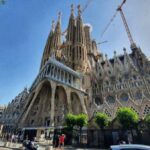 The Fascinating History of Sagrada Familia Barcelona: A Peek into its Past
The Fascinating History of Sagrada Familia Barcelona: A Peek into its PastIn summary, the key milestones in the development of La Sagrada Familia illustrate a rich tapestry of history, innovation, and dedication. Each phase of construction not only pays homage to Gaudí’s legacy but also paves the way for future advancements in architectural practice, making it a true marvel of modern times.
Understanding the Cultural Significance of La Sagrada Familia in Barcelona
La Sagrada Familia represents a profound cultural symbol for Barcelona, reflecting the city's identity and spirit. This architectural marvel is not only a testament to Antoni Gaudí's genius but also a representation of the collective aspirations of the Catalan community. Its ongoing construction has become a point of pride, embodying the persistence of cultural heritage amidst the challenges faced by the city.
The basilica's intricate designs and elaborate façades are steeped in religious significance, serving as a canvas for storytelling through art. Each detail invites interpretation, allowing visitors to engage with the narratives from the Bible. The connection between architecture and spirituality in La Sagrada Familia fosters a sense of community, drawing people from diverse backgrounds to experience its beauty and meaning.
Moreover, La Sagrada Familia plays a vital role in the global cultural landscape, attracting millions of visitors each year. As a UNESCO World Heritage Site, it stands as a beacon of artistic innovation and architectural mastery. The basilica continues to be a source of inspiration for artists, architects, and tourists alike, symbolizing the blend of tradition and modernity that defines Barcelona.
In conclusion, the cultural significance of La Sagrada Familia transcends its physical structure. It encapsulates the essence of Barcelona, reflecting the city's history, spirituality, and resilience. As the basilica nears completion, it promises to remain a lasting icon, celebrating the rich tapestry of life that unfolds within its walls.
The Unique Design Elements of La Sagrada Familia and Their Symbolism
The unique design elements of La Sagrada Familia are emblematic of Antoni Gaudí's visionary approach to architecture. One of the most striking features is the use of organic shapes that emulate natural forms, such as tree branches and flowers. This naturalistic design reflects Gaudí's deep admiration for nature, merging the structure harmoniously with its surroundings. The basilica's towering columns, resembling forest trees, create a serene and uplifting atmosphere that invites contemplation.
Additionally, Gaudí incorporated various symbolic elements within the architecture to convey religious narratives. Each façade represents different aspects of Christ's life, with intricate sculptures and carvings that depict biblical scenes. This storytelling approach not only enhances the spiritual experience for visitors but also serves as a visual representation of faith intertwined with artistry. The Nativity Façade, for example, celebrates the birth of Jesus with abundant floral motifs and playful figures, embodying joy and hope.
The use of light plays a crucial role in Gaudí's design, offering a dynamic interplay between shadow and illumination. Colorful stained glass windows are strategically placed to filter sunlight, creating vibrant patterns that shift throughout the day. This integration of light and color not only enhances the aesthetic experience but also symbolizes the divine, elevating the spiritual ambiance within the basilica. Visitors often describe the interior as a revitalizing space where natural light becomes a key element of worship.
In summary, the unique design elements of La Sagrada Familia encapsulate Gaudí's ingenious creativity and spiritual vision. Through organic forms, symbolic art, and the transformative power of light, the basilica transcends traditional architecture, inviting all who enter to engage with its profound meaning. This architectural marvel stands as a testament to the enduring legacy of Gaudí and the cultural richness of Barcelona.
When Will La Sagrada Familia Finally Be Completed?
The question of when La Sagrada Familia will finally be completed has intrigued both locals and tourists for over a century. Originally set to finish in 2026, coinciding with the centenary of Antoni Gaudí's death, the timeline has faced several delays due to unforeseen circumstances. Currently, estimates suggest a potential completion date could extend beyond 2030, as builders adapt to modern challenges while adhering to Gaudí's intricate designs.
Key factors contributing to the revised completion timeline include:
- Impact of the COVID-19 pandemic on construction schedules.
- Ongoing advancements in technology that enhance architectural accuracy.
- Continued public interest and funding, which support the project's progression.
If we analyze the construction milestones in relation to the projected timeline, it becomes evident that the dedication to Gaudí's vision remains unwavering. Each phase reflects a commitment not only to complete the basilica but also to preserve its architectural integrity. The table below summarizes the expected completion phases:
| Milestone | Year | Status |
|---|---|---|
| Anticipated Completion | 2026 | Delayed |
| New Estimated Completion | 2030+ | Pending |
In conclusion, while the completion date of La Sagrada Familia remains uncertain, the ongoing construction reflects a broader commitment to preserving Gaudí's legacy. The basilica continues to serve as a symbol of ingenuity, resilience, and cultural pride for the people of Barcelona and beyond, promising to captivate future generations with its grandeur.
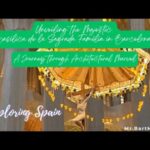 The Sagrada Familia: Unveiling the Architectural Marvel
The Sagrada Familia: Unveiling the Architectural MarvelIf you want to know other articles similar to When Was La Sagrada Familia Barcelona Built? Unveiling the Architectural Marvel you can visit the category Blog.
Deja una respuesta

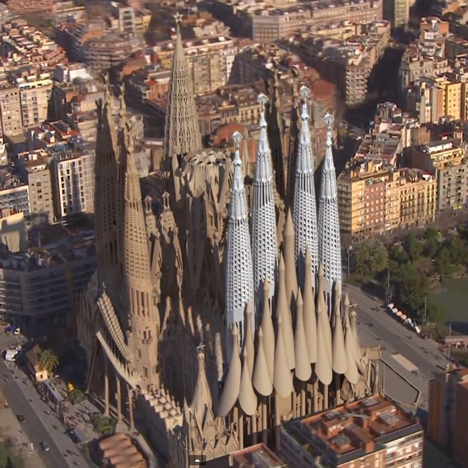
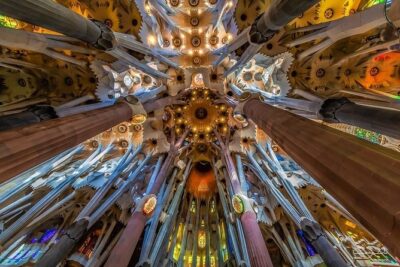
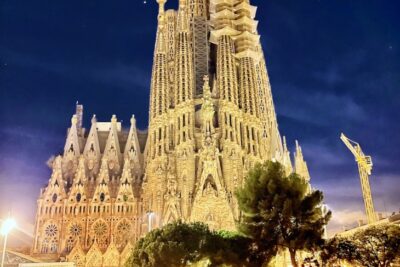
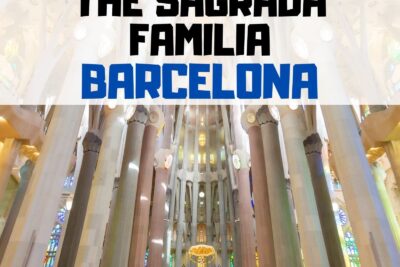
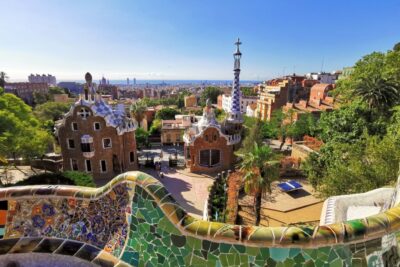
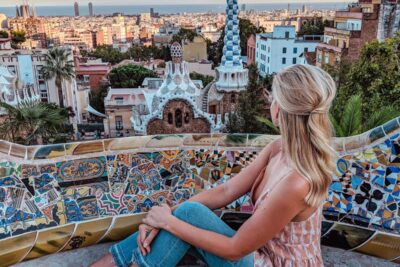

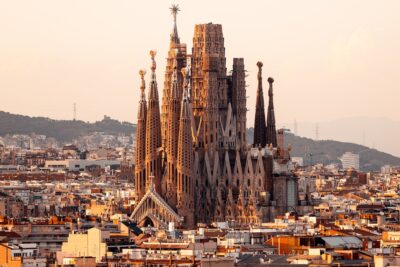
Read more!